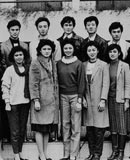不支持Flash
|
2006年Text 1
In spite of “endless talk of difference,” American society is an amazing machine for homogenizing people. There is “the democratizing uniformity of dress and discourse, and the casualness and absence of consumption” launched by the 19th--century department stores that offered “vast arrays of goods in an elegant atmosphere. Instead of intimate shops catering to a knowledgeable elite.” these were stores “anyone could enter, regardless of class or background. This turned shopping into a public and democratic act.” The mass media, advertising and sports are other forces for homogenization.
Immigrants are quickly fitting into this common culture, which may not be altogether elevating but is hardly poisonous. Writing for the National Immigration Forum, Gregory Rodriguez reports that today’s immigration is neither at unprecedented level nor resistant to assimilation. In 1998 immigrants were 9.8 percent of population; in 1900, 13.6 percent .In the 10 years prior to 1990, 3.1 immigrants arrived for every 1,000 residents; in the 10years prior to 1890, 9.2 for every 1,000. Now, consider three indices of assimilation –language, home ownership and intermarriage.
The 1990 Census revealed that “a majority of immigrants from each of the fifteen most common countries of origin spoke English ‘well’ or ‘very well’ after ten years of residence.” The children of immigrants tend to be bilingual and proficient in English. “By the third generation, the original language is lost in the majority of immigrant families.” Hence the description of America as a “graveyard” for languages. By 1996 foreign–born immigrants who had arrived before 1970 had a home ownership rate of 75.6 percent, higher than the 69.8 percent rate among native-born Americans.
特别说明:由于各方面情况的不断调整与变化,新浪网所提供的所有考试信息仅供参考,敬请考生以权威部门公布的正式信息为准。





